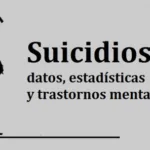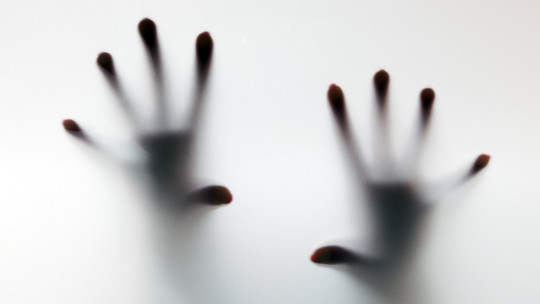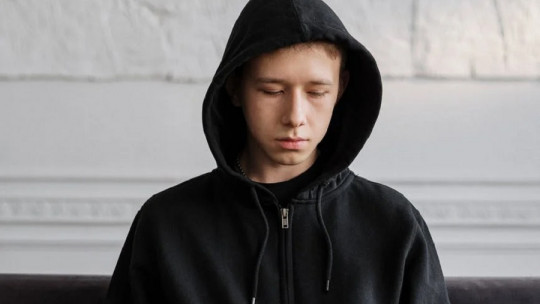Every year around a million people commit suicide Suicides have been increasing progressively, and in Spain in 2017 3,679 people took their lives. The most current theory that attempts to explain this phenomenon is the three-step theory of suicide by researchers Klonsky and May
Through Klonsky and May’s theory we will learn how people go from thinking about committing suicide to attempting it or finally committing suicide.
suicide
Suicide is the act by which a person death is deliberately caused In Spain, suicide is the leading cause of unnatural death, and it has been this way for the last 10 years. In 2007, suicide surpassed deaths in traffic accidents for the first time, which for decades was the leading cause of deaths from external causes (those not derived from diseases). Furthermore, the suicide rate increased by 3.1% in Spain from 2017 to 2018.
Suicide has been and is a silenced problem for so many years that Health is currently developing a suicide prevention plan.
On the other hand, 90% of people who commit suicide suffer from some type of mental disorder, the most common being bipolar disorder, depression and a substance abuse disorder, followed by personality disorders. The majority of patients present with depressive symptoms, which do not always coincide with the presence of a stressful event, but generally there are always suicide attempts in the past, as well as ideas of wanting to die or more structured suicidal ideation.
The three-step theory of suicide
The most current theory that attempts to explain suicide is Klonsky and May’s three-step theory of suicide (3ST), which posits that suicidal ideation originates from the combination of “pain and hopelessness,” “lack of connection or attachment.” to other people”, “absence of a meaningful job or life project” along with one’s own “capacity for suicide”.
The theory proposes that The combination of these factors explains the transition from suicidal ideation to action (attempts and suicides).
From intention to action
In the theory of the three steps of suicide, Klonsky and May establish a specific scheme: “From Ideation to Action”, and they believe that this should guide the theory, research and prevention of suicide. According to this scheme, suicidal ideation first develops, and subsequently the ideation moves to action (attempts and suicide). These two processes (idea and action) require different explanations.
Furthermore, it is worth mentioning that in Spain it has been estimated that Suicide attempts are between 10 and 20 times more frequent than suicide itself
The three steps
The three steps established by Klonsky and May’s three-step theory of suicide are:
Klonsky and May propose three specific categories of variables that contribute to the capacity for suicide:
The three questions
The three steps already explained translate into three fundamental questions in the theory (for practical purposes, the statement of one question leads to the next):
1. Are you in pain and hopeless?
If the subject’s answer is no, then there is no idea of suicide On the other hand, if the answer is YES, then there is an idea of suicide. The positive answer to this question leads to asking question 2.
2. Is your pain bigger than your connection?
If the answer to this question is negative, suicidal ideation is moderate; If it is affirmative, on the other hand, the suicidal idea is strong, important. Once again, the statement to this question leads to asking the last question, question 3.
3. Are you capable of trying to commit suicide?
If the person is not capable of trying, (negative response), then we find a person who only has suicidal ideas. On the other hand, if the answer is affirmative, and the person is capable of trying, then has a real intention to commit suicide
How to reduce the risk of suicide?
The most important tool will obviously be prevention. For this reason, suicide prevention campaigns are and will be necessary, as well as specific protocols for action against suicidal ideas and attempts. It will be essential that these be applied in all mental health centers (mainly primary care centers, hospitals, clinics, etc.) whether public or private.
On the other hand, and following the theory of the three steps of suicide by Klonsky and May, whether as friends, family and especially health (and therefore mental health) professionals, we must focus on:
- Klonsky, E. and May, A. (2015). The Three-Step Theory (3ST): A New Theory of Suicide Rooted in the “Ideation-to-Action” Framework. International Journal of Cognitive Therapy, 8(2), 114-129.
- Klonsky, E. and May, A. (2015). Boost control disorders. Psychiatric Times, 13-21.
- Villar-Cabeza, F., Esnaola-Letemendia, E., Blasco-Blasco, T., Prieto-Toribio, T., Vergé-Muñoz, M., Vila-Grifoll, M., Sánchez-Fernández, B. and Castellano -Tejedor, C. (2018). Dimensional analysis of the personality of adolescents with suicidal behavior. Actas Esp Psiquiatr 46(3), 104-111.









